Abstract
The fate of trimethoprim and sulfamethoxazole and the combination of both these agents was studied in a group of healthy pregnant women who were undergoing therapeutic abortion. Assays were performed on samples of blood, urine, amniotic fluid and fetal tissues, using a standardized protocol for the selection of patients, dose administration, sample collection and assay techniques. A comparative evaluation of kinetics to assess the maternal handling and the distribution of trimethoprim throughout the fetoplacental unit disclosed no significant difference in the concentration within fetal fluids and tissue compartments. On the other hand, the concentration of sulfamethoxazole was lower in fetal tissues than in fetal fluids when relative ratios to trimethoprim were compared. The implications of the difference in behaviour of pharmacokinetic and clinical points of view.
Full text
PDF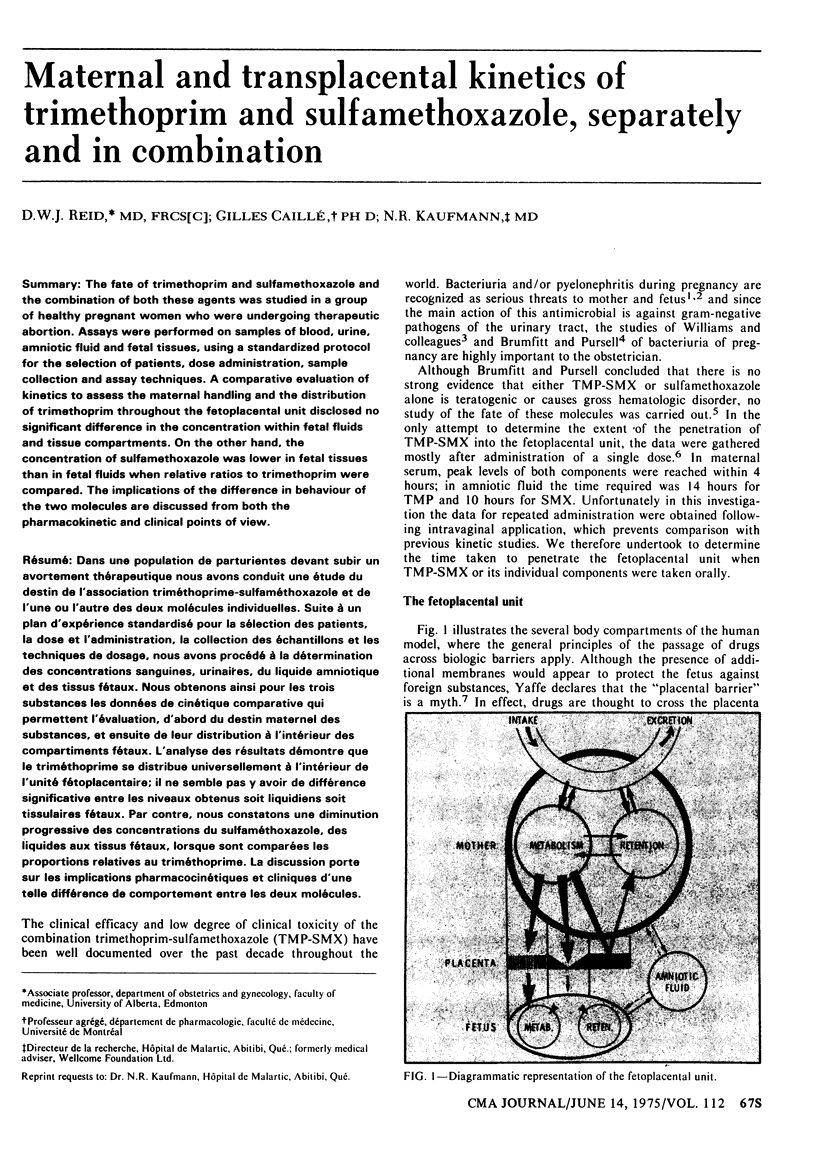
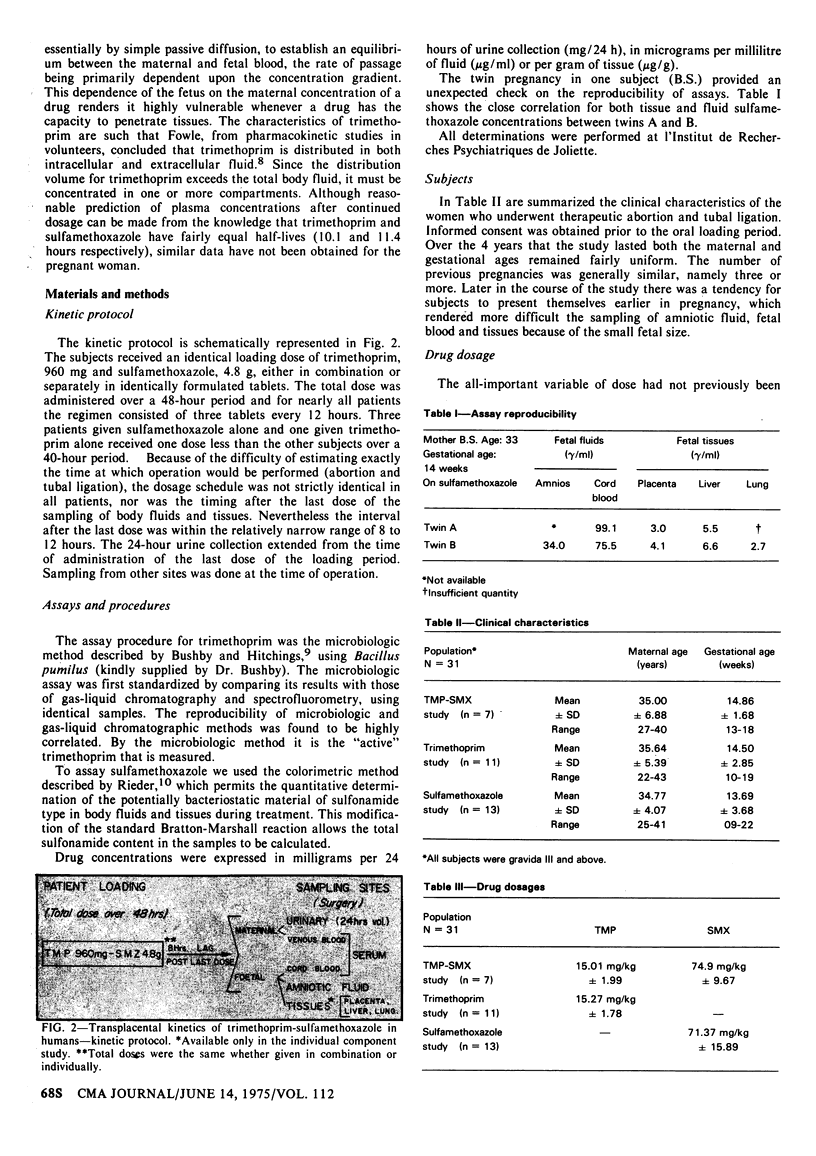
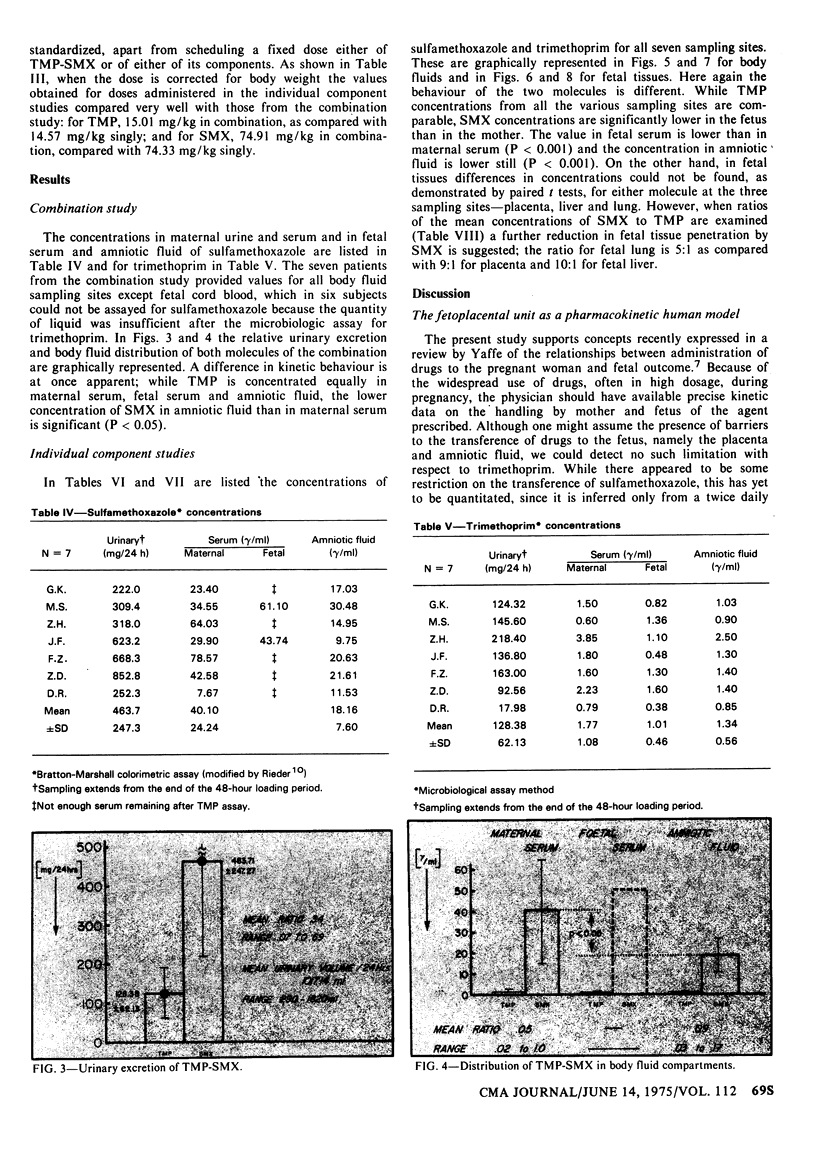
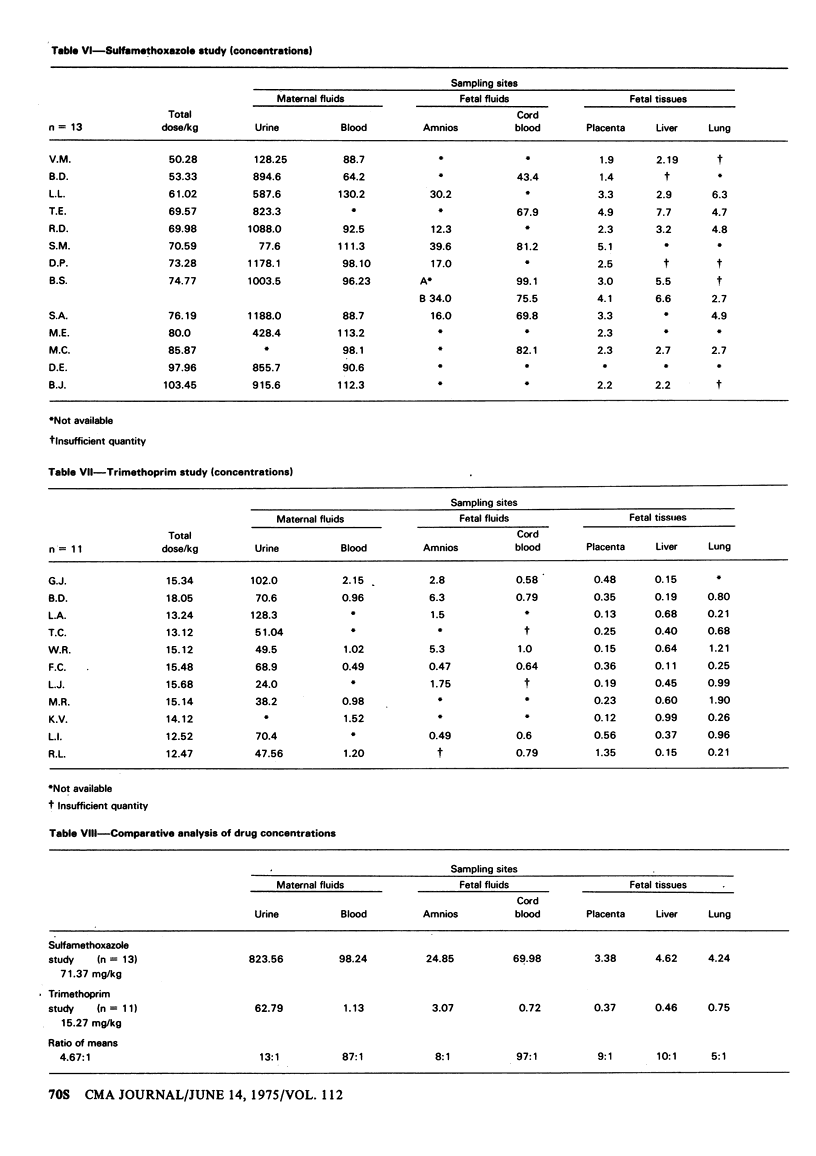
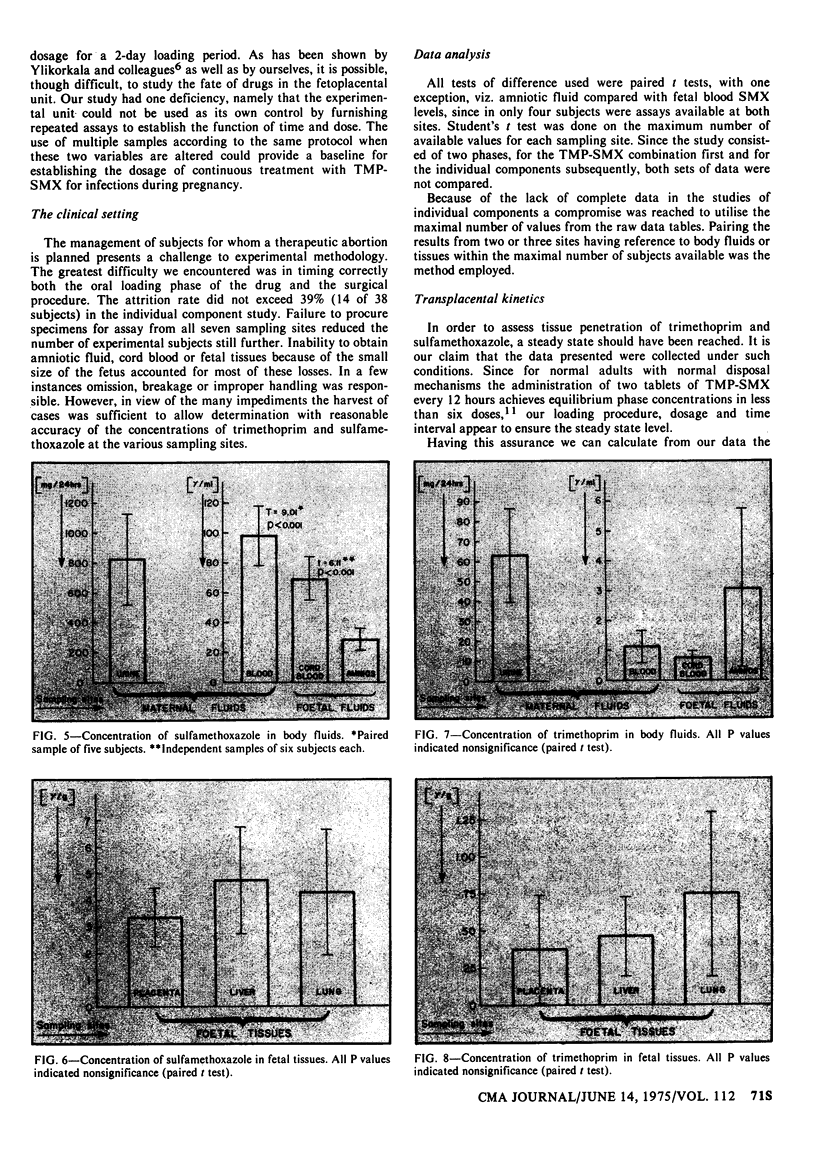
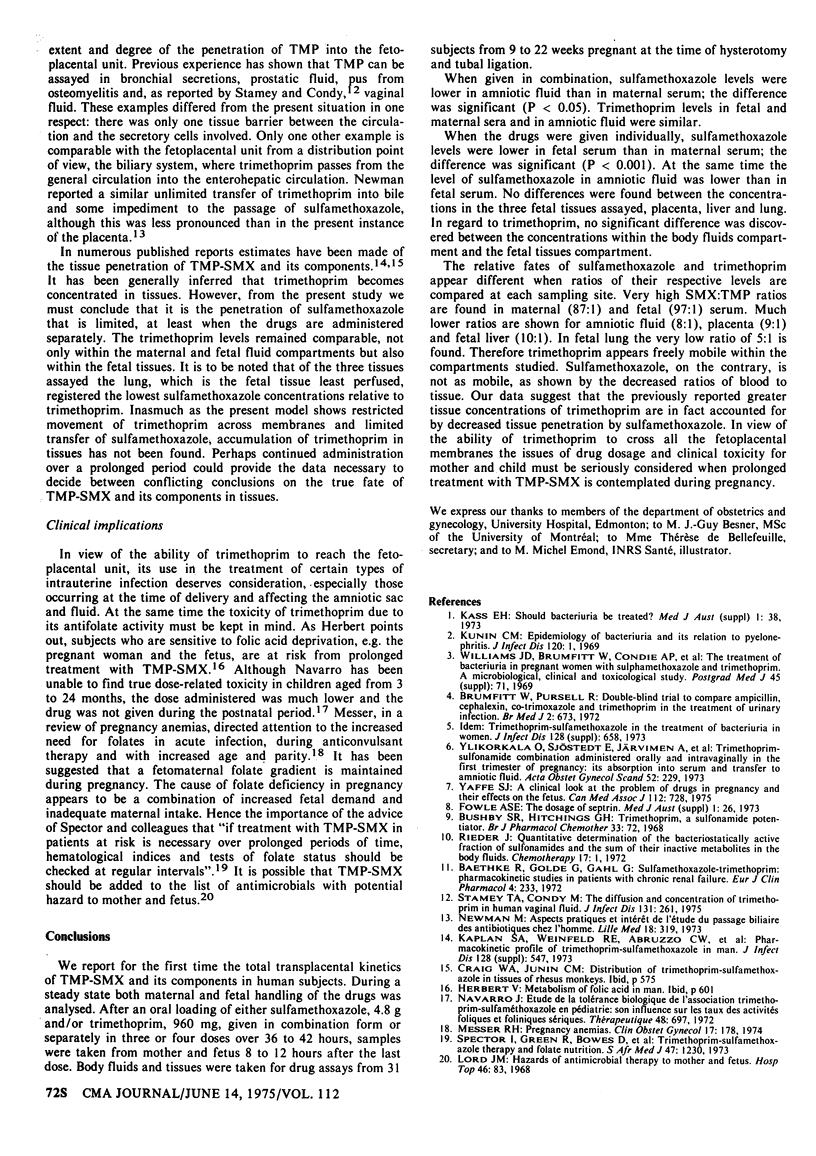
Images in this article
Selected References
These references are in PubMed. This may not be the complete list of references from this article.
- Brumfitt W., Pursell R. Double-blind trial to compare ampicillin, cephalexin, co-trimoxazole, and trimethoprim in treatment of urinary infection. Br Med J. 1972 Jun 17;2(5815):673–676. doi: 10.1136/bmj.2.5815.673. [DOI] [PMC free article] [PubMed] [Google Scholar]
- Fowle A. S. The dosage of septrin. Med J Aust. 1973 Jun 30;1(2 Suppl):26–29. doi: 10.5694/j.1326-5377.1973.tb111182.x. [DOI] [PubMed] [Google Scholar]
- Kaplan S. A., Weinfeld R. E., Abruzzo C. W., McFaden K., Jack M. L., Weissman L. Pharmacokinetic profile of trimethoprim-sulfamethoxazole in man. J Infect Dis. 1973 Nov;128(Suppl):547–p. doi: 10.1093/infdis/128.supplement_3.s547. [DOI] [PubMed] [Google Scholar]
- Kass F. H. Should bacteriuria be treated? Med J Aust. 1973 Jun 30;1(2 Suppl):38–43. doi: 10.5694/j.1326-5377.1973.tb111186.x. [DOI] [PubMed] [Google Scholar]
- Kunin C. M. Epidemiology of bacteriuria and its relation to pyelonephritis. J Infect Dis. 1969 Jul;120(1):1–12. doi: 10.1093/infdis/120.1.1. [DOI] [PubMed] [Google Scholar]
- Rieder J. Quantitative determination of the bacteriostatically active fraction of sulfonamides and the sum of their inactive metabolites in the body fluids. Chemotherapy. 1972;17(1):1–21. doi: 10.1159/000220833. [DOI] [PubMed] [Google Scholar]
- Spector I., Green R., Bowes D., Cohen H., Miller S., Metz J. Trimethoprim-sulphamethoxazole therapy and folate nutrition. S Afr Med J. 1973 Jul 21;47(28):1230–1232. [PubMed] [Google Scholar]
- Stamey T. A., Condy M. The diffusion and concentration of trimethoprim in human vaginal fluid. J Infect Dis. 1975 Mar;131(3):261–266. doi: 10.1093/infdis/131.3.261. [DOI] [PubMed] [Google Scholar]
- Williams J. D., Brumfitt W., Condie A. P., Reeves D. S. The treatment of bacteriuria in pregnant women with sulphamethoxazole and thrimethoprim. A microbiological, clinical and toxicological study. Postgrad Med J. 1969 Nov;45(Suppl):71–76. [PubMed] [Google Scholar]
- Yaffe S. J. A clinical look at the problem of drugs in pregnancy and their effect on the fetus. Can Med Assoc J. 1975 Mar 22;112(6):728–733. [PMC free article] [PubMed] [Google Scholar]










